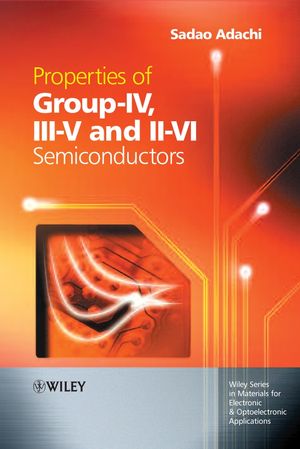Properties of Group-IV, III-V and II-VI SemiconductorsISBN: 978-0-470-09032-9
Hardcover
406 pages
April 2005
 This is a Print-on-Demand title. It will be printed specifically to fill your order. Please allow an additional 10-15 days delivery time. The book is not returnable.
|
||||||
Almost all the semiconductors of practical interest are the
group-IV, III-V and II-VI semiconductors and the range of technical
applications of such semiconductors is extremely wide.
The purpose of this book is twofold:
* to discuss the key properties of the group-IV, III-V and II-VI semiconductors
* to systemize these properties from a solid-state physics aspect
The majority of the text is devoted to the description of the lattice structural, thermal, elastic, lattice dynamic, electronic energy-band structural, optical and carrier transport properties of these semiconductors. Some corrective effects and related properties, such as piezoelectric, elastooptic and electrooptic properties, are also discussed.
The book contains convenient tables summarizing the various material parameters and the definitions of important semiconductor properties. In addition, graphs are included in order to make the information more quantitative and intuitive.
The book is intended not only for semiconductor device engineers, but also physicists and physical chemists, and particularly students specializing in the fields of semiconductor synthesis, crystal growth, semiconductor device physics and technology.
The purpose of this book is twofold:
* to discuss the key properties of the group-IV, III-V and II-VI semiconductors
* to systemize these properties from a solid-state physics aspect
The majority of the text is devoted to the description of the lattice structural, thermal, elastic, lattice dynamic, electronic energy-band structural, optical and carrier transport properties of these semiconductors. Some corrective effects and related properties, such as piezoelectric, elastooptic and electrooptic properties, are also discussed.
The book contains convenient tables summarizing the various material parameters and the definitions of important semiconductor properties. In addition, graphs are included in order to make the information more quantitative and intuitive.
The book is intended not only for semiconductor device engineers, but also physicists and physical chemists, and particularly students specializing in the fields of semiconductor synthesis, crystal growth, semiconductor device physics and technology.



